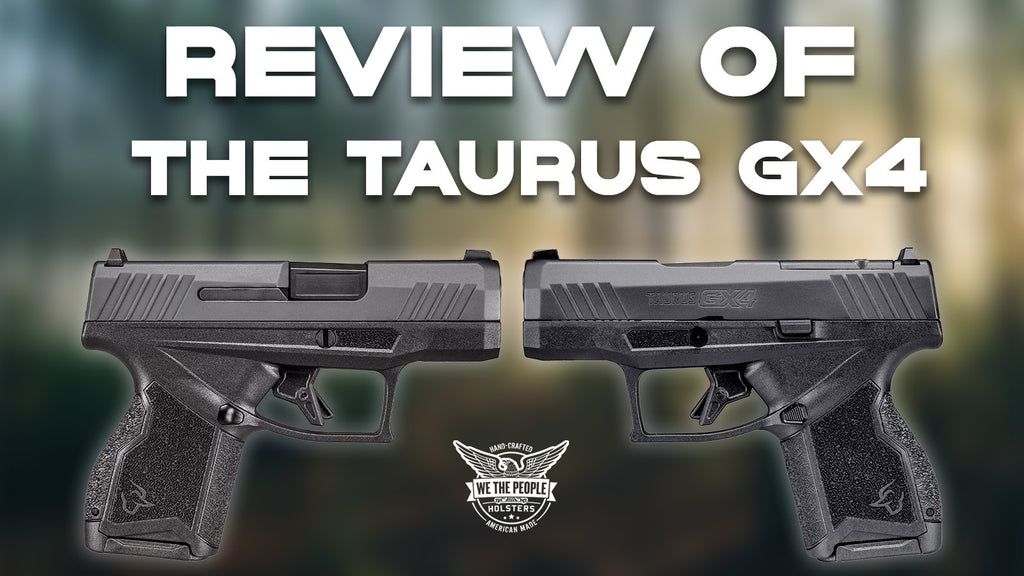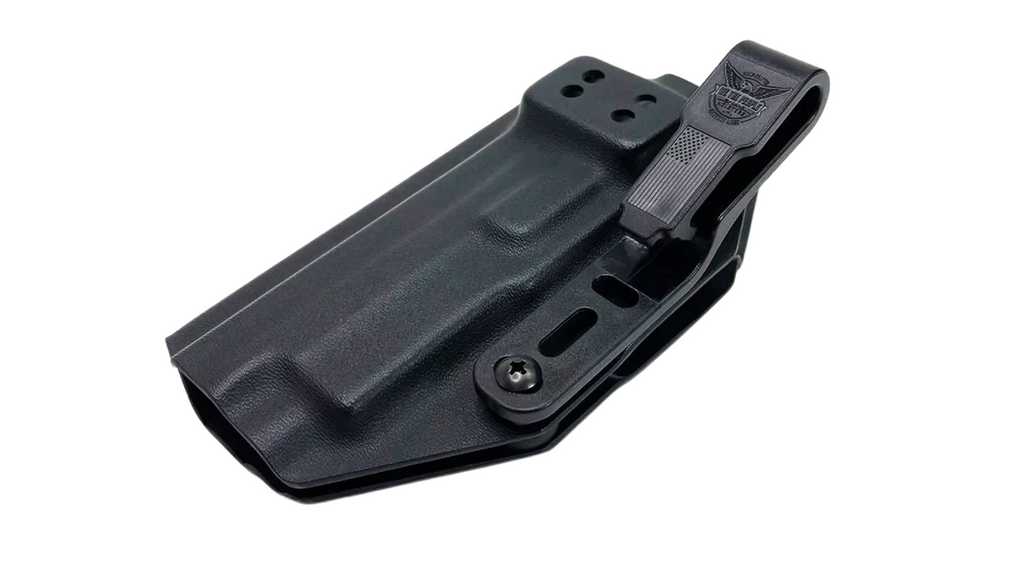Taurus G2c vs. Taurus G3c vs. Taurus G3

Three of the most popular Taurus pistols available today are the G2c, G3, and G3c models. Although all three are lightweight, polymer-framed, striker-fired pistols, each offers a range of unique features that serious shooters should consider.
Discover the similarities and differences between three of the most popular Taurus semi-automatics and find out which is the best suited for your applications.
Overview and Specifications
The G2c, G3, and G3c belong to the Taurus G-series family of polymer-framed, striker-fired, 9x19mm semi-automatic pistols, themselves descended from an earlier family, the Millennium series.
The original G-series pistol was the Taurus Millennium G2 PT-111, followed by the G2c, G2s, G3, G3c, G3X, and G3XL pistols.
Specifications (Taurus G2c)
-
Chambering: 9x19mm or .40 S&W
-
Overall length: 6.3”
-
Height: 5.1”
-
Width: 1.2”
-
Barrel length: 3.2”
-
Weight: 22 oz. with an empty magazine
-
Standard capacity: 12+1 (9mm), 10+1 (.40 S&W)
Specifications (Taurus G3c)
-
Chambering: 9x19mm
-
Overall length: 6.3”
-
Height: 5.1”
-
Width: 1.2”
-
Barrel length: 3.2”
-
Weight: 22 oz. with an empty magazine
-
Standard capacity: 12+1 (9mm)
Specifications (Taurus G3)
-
Chambering: 9x19mm
-
Overall length: 7.28”
-
Height: 5.2”
-
Width: 1.2”
-
Barrel length: 4”
-
Weight: 24.83 oz. with an empty magazine
-
Standard capacity: 17+1
Similarities

The G2c and G3c are subcompact pistols with dimensions equivalent to popular handguns such as the Glock 26, Smith & Wesson M&P M2.0, or Springfield Hellcat.
These Taurus models are polymer-framed, striker-fired pistols. Both feature a trigger-mounted safety, a manual safety lever, a 12-round magazine, and an accessory rail for compact lights and laser sights.
The Taurus G3 is a mid-size pistol, similar to competing models like the Glock 19, Beretta APX Compact, or Smith & Wesson M&P9. It is essentially a larger, higher-capacity version of the G3c.
All three pistols are lightweight handguns designed for personal protection and concealed carry, best paired with a quality everyday-carry IWB holster.
Although the G2c uses a different trigger control group as the G3 and G3c, it possesses the same average trigger pull weight, at approximately 6 lbs.
Additionally, all three pistols are compatible with the same family of magazines, the Taurus G-Series magazines, as long as the frame size can accommodate the magazine.
This principle is similar to the way Glock magazines function. For example, a 17-round G3 magazine will fit in the mid-size G3 and the compact G2c and G3c, but a short 12-round G3c magazine will not work in the mid-size G3.
Comparisons and Differences
Despite their similar looks and basic features, each pistol has its unique characteristics, making them stand out from the other two.
Taurus G2c vs. Taurus G3c

At first glance, the Taurus G2c and G3c appear nearly identical: the same capacity, dimensions, and barrel length. They even seem to possess the same ergonomics and design, with a similar grip texture and thumb rest.
The primary differences between the G2c and the G3c are the sighting system, the available calibers, and the slide finish. Though both pistols feature a standard fixed front sight, the G2c’s rear sight is fully adjustable for windage and elevation, whereas the G3c features a more straightforward, drift-adjustable rear sight.
If you’re looking for a .40-caliber option, the Taurus G2c is available in .40 S&W with 10-round magazines. In contrast, the G3c is only available in 9x19mm.
The Taurus G2c’s slide features a standard matte black finish, whereas the G3c possesses a newer, more durable Tenifer finish, providing the slide with superior rust and corrosion resistance. Additionally, the G3c’s slide features front serration, whereas the G2c doesn’t, featuring slide lightening cuts.
Taurus G3c vs. Taurus G3

The Taurus G3 and G3c are part of the same iteration of the G-series pistol family, with the G3 being the standard, mid-size model and the G3c serving as the compact version of the G3.
Because the G3c and G3 belong to two different size groups, the primary differences are height, grip size, frame size, magazine capacity, and concealability.
Although both pistols have an accessory rail, the G3’s larger frame features a more extended rail, capable of accepting a wider variety of accessories. The G3c’s rail is short and may only accept compact pistol accessories. The G3’s standard magazine features a 17-round capacity, five more than the G3c’s.
Although both pistols have the same width, the G3 is slightly taller and longer than the G3c, featuring a taller grip, a longer barrel (4” vs. the G3c’s 3.2”), and a matching longer slide. Though both pistols are easy to conceal, the G3c’s smaller dimensions give it an advantage, helping to reduce printing.
Taurus G2c vs. Taurus G3
When comparing the G2c with the G3, most of the primary differences between the G3c and G3 still apply, with the addition of two critical ones: sighting systems and chambering options.
Like the G3c, the G3 features a set of simple combat sights, with a high-contrast white dot front sight and an unmarked, serrated rear sight, making it a 1-dot sighting system. The G3’s rear sight is drift-adjustable, allowing the shooter to adjust for windage but not elevation.
The G2c features fully-adjustable sights, letting the shooter adjust windage and elevation. The front and rear sights come with high-contrast aiming dots, making it a 3-dot sight set.
As with the G3c, the G3 is only available in 9x19mm, and comes out of the box with two 17-round magazines. Taurus currently does not offer a .40 S&W version of the G3.
The G2c is available in either 9x19mm or .40 S&W. Both versions come out of the box with two magazines each, with the 9mm version featuring 12-round magazines and the .40 version featuring 10-round magazines.
Which is Right for Me?
Although all three are reliable, fully-featured, affordable pistols, each fulfills a slightly different list of needs and applications.
-
If you’re looking for a subcompact pistol primarily intended for everyday carry, the Taurus G2c and G3c are the most concealable choices.
-
If you’re looking for a general-purpose handgun that you can use for both concealed carrying and home defense, you may prefer the Taurus G3.
-
If you need a .40-caliber pistol, the Taurus G2c is the only one of the three models available in .40 S&W.
-
If you need a pistol with a highly-durable slide finish, you may prefer the Tenifer finish on the G3 and G3c over the standard black matte finish of the G2c.
Choose a Quality Holster for Your Taurus G-Series

No matter which model you prefer, a responsible shooter carries their EDC pistol in a safe, reliable, and highly-durable holster. At We The People Holsters, our mission is to outfit Americans of all walks of life with the best 100% hand-crafted holsters.
Browse our selection of Kydex and leather holsters and find the IWB or OWB product you need to carry your G2c, G3, or G3c pistol safely.



